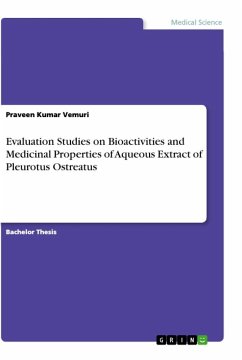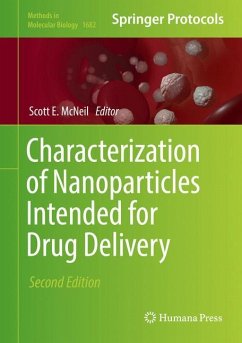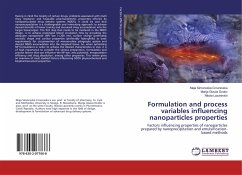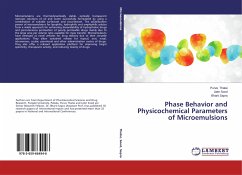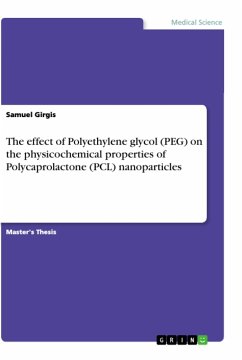
The effect of Polyethylene glycol (PEG) on the physicochemical properties of Polycaprolactone (PCL) nanoparticles
Versandkostenfrei!
Versandfertig in 1-2 Wochen
27,95 €
inkl. MwSt.

PAYBACK Punkte
0 °P sammeln!
Master's Thesis from the year 2013 in the subject Medicine - Pharmacology, grade: 71.5, University of Ulster (school of pharmacy), course: pharmaceutical sciences, language: English, abstract: The aim of the current study is to design amphiphilic PCL/PEG nanoparticles having better physicochemical properties than the PCL nanoparticles. Here we show that increasing the MWt of PCL can increase the size, zeta potential, protein loading efficiency and protein release rate of the PCL nanoparticles while blending of PEG with PCL can increase the protein loading efficiency, increase the stability, de...
Master's Thesis from the year 2013 in the subject Medicine - Pharmacology, grade: 71.5, University of Ulster (school of pharmacy), course: pharmaceutical sciences, language: English, abstract: The aim of the current study is to design amphiphilic PCL/PEG nanoparticles having better physicochemical properties than the PCL nanoparticles. Here we show that increasing the MWt of PCL can increase the size, zeta potential, protein loading efficiency and protein release rate of the PCL nanoparticles while blending of PEG with PCL can increase the protein loading efficiency, increase the stability, decrease the size and enhance the protein release rate of PCL nanoparticles. The BSA loaded LPCL nanoparticles have higher protein loading efficiency, protein release rate, size and zeta potential than the SPCL and MPCL nanoparticles. All the LPCL/PEG blends produce nanoparticles with smaller sizes, narrower PDI(s), and higher protein release rates than the BSA loaded LPCL nanoparticles. LPCL/SPEG2.5% and LPCL/SPEG5% nanoparticles have higher protein loading efficiencies, smaller sizes, narrower PDI(s), and higher protein release rates than the BSA loaded LPCL nanoparticles.Oral route is the best route for drug administration because it avoids pain and infections associated with injections. Biodegradable polymeric nanoparticles are considered an attractive alternative to injections as a controlled oral release protein delivery system because they are highly stable in the gastrointestinal tract (GIT) and able to protect the loaded proteins from destruction in GIT.Polycaprolactone (PCL) is a hydrophobic polymer, compatible with various hydrophilic and amphiphilic polymers, and a good candidate from the pharmaceutical point of view to form nanoparticles because its physical, chemical, and mechanical properties can be easily modified by copolymerization or blending or grafting with other polymers.



